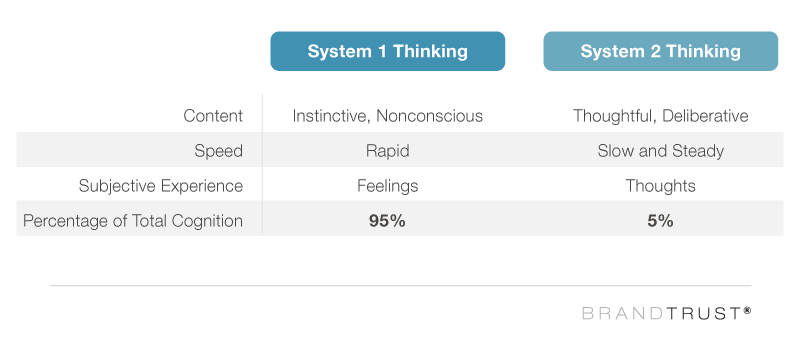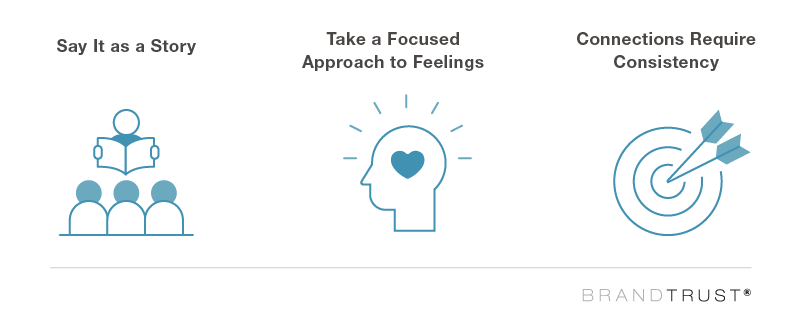The moment she laid eyes on the kouros, Evelyn Harrison knew something was wrong.
Harrison, one of the world’s foremost experts in ancient Grecian art, stood in the basement of the Getty Museum in Los Angeles. Museum officials had brought her here to admire their latest major acquisition: a statue of a nude boy dating back to the 6th century B.C. The Getty had eagerly paid millions for it; the kouros was an exquisite example of its form.
There was only one problem, Harrison told them: It was a fake.
Museum officials rushed to assure her otherwise. They’d conducted a dizzying array of tests to ensure its authenticity, including carbon dating the statue’s stone and determining its provenance through chemical analysis. Harrison stuck by her guns. After decades of intimate acquaintance with ancient Greek artifacts, she could tell the statue wasn’t one of them.
Refusing to accept that they’d paid millions for a counterfeit, the museum presented their prized acquisition to the public in 1986. But five years later, a torso bearing striking similarities to the Getty kouros emerged – and this one was unquestionably fake. The statue’s defenders softened their stance, admitting their tests could have been duped. The Getty appended a caveat to the statue’s claimed origins: “Greece (?) about 530 B.C. or modern forgery.”
In 2018, the museum finally accepted the view that Evelyn Harrison had proposed more than three decades earlier, within seconds of seeing the statue. The Getty no longer displays the kouros among its ancient Greek artworks. “It’s fake,” said museum director Timothy Potts, “So it’s not helpful to show it along with authentic material.”
Systems 1 and 2: Connecting Intuition and Intellect
Malcolm Gladwell loves the story of Evelyn Harrison and the Getty kouros. In his seminal book, “Blink,” Gladwell describes Harrison’s keen assessment as the apotheosis of instinct: At its finest, the human mind can instantly discern what dozens of complex tests cannot.
But no one is born with such powers of intuitive insight. Rather, instincts like Harrison’s accumulate over years of education and exposure, calcifying over time. Gladwell describes how Tom Hoving, former director of the Metropolitan Museum of Art, would spend hours in the museum’s basement, refining this intuition through intimacy with the artwork.
“[He] spent hours holding, touching, looking at works of art, trying to understand – trying to kind of build up that store in his unconscious about all the sort of facts and opinions and data on the kind of art that he was gonna spend his life studying,” Gladwell explained to an interviewer. “And that’s what happens when we accumulate experience … I think we start to educate our unconscious in this very powerful way.”
Nobel laureate Daniel Kahneman would likely describe this very phenomenon in slightly different terms. When we become intimately acquainted with something, he might say, System 1 and System 2 thinking can work in concert.
In his classic “Thinking Fast and Slow,” Kahneman bifurcates all of human cognition into two essential systems. System 1 accounts for the nonconscious, instinctive mechanisms of our minds – the automatic responses developed across our evolutionary history to serve our survival.
System 1 thinking permits us to consume food thoughtlessly, never needing to consciously consider how to chew or swallow. When we slam on the brakes to avoid a collision, System 1 has saved us. When Evelyn Harrison knows instinctively that the kouros is fake, credit her System 1 cognition – what Gladwell calls her educated unconscious.
System 2, conversely, consists of our rational, deliberative thinking. Whenever we mull something over in our mind or approach a subject in analytical terms, we employ System 2 skills. If we’re consciously directing our thinking, System 2 is at work.
When Evelyn Harrison writes a paper explaining issues with the kouros’ credibility, for example, she’s firmly in the realm of System 2 performance. As she types away without looking at her keyboard, however, System 1 is functioning.
For brands, the implications of Kahneman’s typology are enticing: Clearly, it would be desirable to forge a System 1 connection with your customers. Indeed, the strongest brand connections are those so deep they go unquestioned.
When consumers reach for your product instinctively, without even considering the offerings of competitors, you’ve achieved true System 1 loyalty. But many shoppers have just System 2 connections with the companies they choose: When another business presents a better deal, they’ll switch brands swiftly. After all, doing so is only logical.
Herein lies the essential challenge for modern marketers: In a world where competition for consumer dollars rages more intensely than ever, how can your brand move from a deliberative connection with your customer toward an intuitive one?
Unfortunately, there’s no direct pipeline to the nonconscious mind, and many of the tools marketers possess are System 2-centric. Ads and other messaging often appeal primarily to the mind’s logical faculties, touting a product or service’s concrete advantages.
Yet, as Evelyn Harrison’s keen eye suggests, abstract information can permeate the nonconscious mind when supported by certain kinds of lived experiences. Through her immersion in the world of antiquities, Harrison experienced an alignment of her two systems of thinking simultaneously: Academic knowledge, paired with her vast experience among authentic artworks, had reshaped her instincts. She knew the kouros was fake at once, although precise justifications for this reaction came to her only later.
Harrison’s experience should give brands hope that it is possible to forge a System 1 connection with customers: When messaging is supported in a meaningful way within the customers’ experiences, their loyalty can become equally automatic.
Below, we’ll describe three strategies with which your brand can break through the System 2 barrier, achieving the instinctive connection every company should seek with customers.
From Logic to Loyalty: Three Ways to Form System 1 and 2 Connections With Customers
-
Say It as a Story
To be human is to love a good story: Appreciation for narrative is ingrained in our species. In childhood, we hang on our parents’ every word as they tell us bedtime stories. As we age, stories become essential to how we interpret our life trajectories: Our various triumphs and tragedies form a tale we tell to understand ourselves.
In Kahneman’s view, however, storytelling plays an even more fundamental role in our experience of the world: It’s the mode in which System 1 thinking functions. When confronted with new or incomplete information, our nonconscious mind sorts it into previously established patterns. According to Kahneman, those patterns are best understood as stories.
“System 1 is a storyteller. It tells the best stories that it can from the information available, even when the information is sparse or unreliable,” Kahneman explained in an interview about his work. “And that makes stories that are based on very different qualities of evidence equally compelling. Our measure of how ‘good’ a story is – how confident we are in its accuracy – is not an evaluation of the reliability of the evidence and its quality. It’s a measure of the coherence of the story.”
In other words, when it comes to affecting System 1 perception, narrative coherence matters more than having mountains of evidence. This mirrors advice the team at Brandtrust consistently shares with our clients: Prioritize storytelling over presenting an overwhelming number of facts.
As you make your case to customers, it’s tempting to share a ton of information relevant to your value proposition. But to resonate with your customers’ System 1 and System 2 cognition, it’s best to present a clear and simple narrative arc instead, attesting to your company’s distinct values.
Like most great stories, your brand’s essential narrative should include a few basic elements: characters, conflict, and a conclusion. What challenges will you help your customer overcome? The answer to that question will be the basis for the story you tell – and the System 1 connection you establish.
2. Take a Focused Approach to Feelings
In the evolutionary development of human beings, System 1 thinking served life’s most basic drives, such as survival, sustenance, and reproduction. Of course, we don’t experience these impulses directly: Their power consists of the emotional experiences that accompany them.
In moments of risk or danger, our fight or flight reflexes manifest themselves as fear. When we enjoy a sense of social connection, we feel the warmth of friendship. These emotional realities are more forceful in dictating behavior than any rational conclusion.
Accordingly, if System 2 is the realm of facts and figures, System 1 revolves around feelings. How can brands influence their customers’ emotional reactions, including feelings buried too deep to perceive?
Begin by studying your customers’ experiences, setting aside your preconceived notions of what matters most to them. Are landmines of negative feeling embedded in their encounters with your brand? Rationally, your customers may dismiss these small failures as no big deal, but their System 1 thinking may keep score.
For professionals responsible for delivering superb customer experiences, the essential question is one of prioritization: No brand is perfect in every moment, so which pieces of the customer journey have an outsized impact on System 1 impressions? While you can’t agonize over every element, you must consistently deliver when it counts.
Thankfully, Kahneman’s work offers valuable insights on this subject as well. After studying how individuals form holistic impressions of their lived experiences, he proposed a theory of System 1 impacts called the Peak-End Rule. In this formulation, “peaks” refer to the most emotionally charged portions of a given experience (in which System 1 cognition is particularly likely to be operative). The term “end” is quite literal, describing a given experience’s final moments.
Kahneman observed that peaks and ends had an outsized influence upon the overarching impressions of his participants. If an otherwise positive experience closed with a surge of negative emotion, participants tended to rate the entire encounter in disproportionately harsh terms.
This same pattern was evident when negative elements of an experience coincided with its emotional peaks. If disappointment overlapped with times when participants were especially anxious or uncertain (System 1 states), it would doom their impression of the experience as a whole.
Accordingly, customer opinion is driven are defined less by cumulative effort than performance in specific, crucial moments. Put aside your preconceptions regarding what customers care about, and consider the peaks and ends they encounter with your brand.
In moments when they feel apprehension, do you continue business as usual or expend extra effort to deliver assurances? Do customer interactions typically end on a high note, or fizzle once the transaction is complete?
Don’t underestimate the force of negative feelings at the emotional peaks of the customer journey – even if their experience is excellent in other respects. In the terms of System 1 aversion and attraction, the impact of these key moments is enormous.
3. Connections Require Consistency
Trust is implicit in our System 1 emotional connections, both with people and with brands. When we return to the same company continually, we do so because we trust that past positive experiences will be replicated. When we feel happy in the presence of a friend, we trust they will not hurt us.
Indeed, trust may underlie all beneficial emotional connections; as neuroscientist Antonio Damasio had noted, “There is no love without trust.” Trust and its benefits are instinctive, not evaluative: We feel them. But they are also essentially fragile.
If a company fails us, we may find it difficult to trust them ever again. Indeed, trust is easily ruptured and difficult to restore. There’s a reason so many individuals find their personal relationships hindered by “trust issues” – it can be easier to renounce trust entirely than risk disappointment once more.
For brands, the unfortunate reality is that failures can undermine otherwise admirable service. Even if your company succeeds in the vast majority of cases, your customer will still wonder if disappointment lies ahead. As discussed above, this negative feeling of uncertainty is one you can’t afford.
Clearly, consistent service depends on your employees: One person’s poor performance can sour a customer’s impression of your entire brand. Within many companies, customer service and marketing are entirely separate entities. But employee performance is an essential vector of System 1 influence.
Accordingly, the key to consistently strong service is culture. How can you support those who infuse customer interactions with your company’s values? If your team demonstrates to customers that it is consistently trustworthy, that impression may be more effective than any ad campaign in retaining customers – and gaining new ones via word of mouth.
All Systems Go: Respecting Your Customers’ Complexity
These approaches can aid brands that feel they are falling short of forming enduring connections, cementing System 2 appeals with System 1 resonance. Indeed, the principles we’ve outlined here are flexible enough to apply in any field – essential human truths do not vary by industry.
Exciting as these ideas may be, however, we must caution against attempting to apply them too hastily. System 1 thinking is too subtle to understand and influence without adequate preparation. Before moving forward with some sweeping changes on your brand’s behalf, careful consideration is warranted.
Brandtrust specializes in exploring the nuances of customer experiences and desires, uncovering the System 1 drivers of their behaviors. After 20 years of assisting respected brands with a range of challenges, we’ve learned not to rely on unfounded assumptions to guide brand strategy.
Rather, we use the methodologies of behavioral science to identify and influence key junctures in the customer journey. Our detailed recommendations empower brands to make changes with confidence because our process produces actionable data. System 1 thinking may describe customers going with their gut – but you don’t have to make business decisions on that basis.
To see how our approach can transform your brand’s relationship with your customers, explore our services and research methodologies today.




